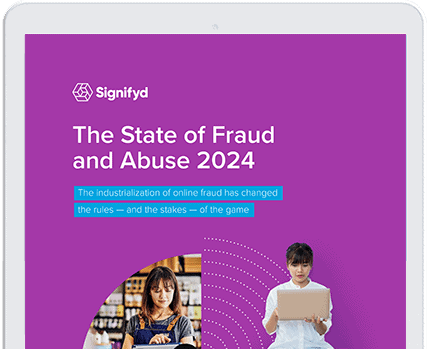For retailers, there is the holiday season and then there is the holiday returns season.
Sorry to spoil the celebration around the surge of orders that most merchants see in the fourth quarter, but the rollicking good times of the holiday season do come with an inevitable downside.
Beginning shortly after Christmas, holiday returns come rolling in. The outsized sales volume results in an outsized volume of returns — more so with online purchases and even more so when the original purchase was bought by a someone for someone else.
When is peak returns season?
Holiday shoppers returned more than $82 billion in products last year, an analysis by return logistics company Optoro and real estate logistics firm CBRE determined. That marked a 50% increase from 2018, the report concluded.
Signifyd sees returns surge by 10% to 15% around major holidays, Signifyd Chief Customer Officer J. Bennett says. Not only that, but fraudulent returns and abusive returns also increase.
Merchants tell stories about returns coming back in the form of a box of Kleenex or an empty shoe box or, of course, a knock-off version of an expensive product.
“I would say on the swapping of items, these people are really good,” retail veteran RJ Cilley said during a panel discussion at Signifyd’s FLOW Summit. “You literally put the two items next to each other. You look at the watches. When you get there in person and you feel the weight. … These things are fantastic.”
You don’t want a bad returns story to go viral
Former Saks COO RJ Cilley talk at Signifyd’s FLOW Summit about some of the unexpected ways returns can go bad for merchants. Cilley’s story has a gratifying ending, but getting returns right is a constant battle for retailers as bad actors’ tactics are constantly evolving.
How many holiday returns are fraudulent?
The scam returns are fantastic — and prolific. The National Retail Federation reported that 15.4% of holiday purchases were returned in 2023 and that 16.5% of those returns — or $25 billion worth — were fraudulent. For 2023 as a whole, 14.5% of all purchases were returned, while 17.5% or $ 247 billion worth of online purchases were returned.
No doubt, the returns challenge is increasing throughout the year — driven by more savvy consumers egged on by social media how-tos and by professional criminal rings that split the profits with consumers willing to break the rules.
“It’s partly because of the refund-as-a-service-type services that exist and that have been promoted online,” says Catherine Tong, a partner at Allyz. “ But I think it’s also a reality of the current economy as well — people want to still live the lifestyle that they’ve had and got used to, but maybe can’t afford anymore. One way to do that is to exploit returns loopholes or customer service goodwill gestures.”
How can retailers reduce online returns?
While the picture appears bleak, the returns story is not all doom and gloom. There are steps retailers can take to avoid returns in the first place and to spot fraudulent and abusive returns when they happen.
The best way to deal with ecommerce returns is to avoid having an item returned in the first place. There are a number of steps to take right now to reduce the number of return requests a merchant is receiving. To reduce the volume of returns you receive:
- Ensure that the product photos and descriptions on your website are clear and accurate. Naturally, when customers receive an item that does not meet the expectations created by a merchant’s site, they are more likely to return it. When Signifyd surveyed 1,000 consumers, asking why they had requested a return, 27% said they did so because the product did not match the description.
- Provide consistent sizing and helpful sizing guides. Consider (particularly if you’re an apparel retailer) some of the emerging sizing technologies. Think about adding how-to videos when it makes sense, such as for somewhat complicated products. Prepare your customer support teams with answers to frequently asked questions about particular products. Don’t let frustration or confusion over a brand-new product lead to a customer throwing up their hands and sending the whole thing back.
- Be responsive when deliveries go wrong. If a lapse in inventory control means an ordered product is not actually in stock or other unforeseen circumstances have led to a delay in fulfillment, let the customer know. Over-communicate. Keep the customer updated. Not only can fulfillment glitches lead to chargebacks, but sometimes a frustrated customer will order the item they want elsewhere and return the one they ordered from you — once it finally arrives.
- Pay attention to the reasons products are returned. If and when patterns arise, determine whether it is a flaw or challenge that you can rectify. Eliminating the reason customers return a product goes a long way to eliminating the returns themselves.
How Tuckernuck found help with its returns conundrum
Tuckernuck CFO Emilie MacFarlane spoke at Signifyd’s FLOW Summit in April about how the apparel merchant turned to a third-party returns expert to help them get products back on the shelf quickly.
Customers expect free and easy returns
One item not on the list is just say no. Why not refuse to accept returns or otherwise limit returns or charge for the privilege? We know why, right? Certainly, there are cases where a merchant should simply turn down a return request. Say a customer has broken an item through misuse or blatant carelessness. Or say a customer has clearly worn or used the product and now wants a refund. (Depending on your return policy, of course.)
But free and easy returns have gone from being a competitive advantage to being a competitive necessity. True, some merchants are tightening up returns or charging for returns. Others are reversing decisions to charge for returns after finding customers really don’t like paying for returns.
When Signifyd last surveyed consumers on the issue, only 29% said they made purchases without considering an online merchant’s return policy. In the same poll of 1,000 consumers, 66% said they would stop buying from a merchant after having a bad returns experience. Conversely, 65% said they’d buy more from a merchant after having a good returns experience.
All that to say, that when it comes to returns we may have reached the point of, well, no return. And sure, maybe providing easy returns for loyal customers feels right and is likely to keep them coming back. But what about the others? Customers who not only lack loyalty but who look to take advantage of generous return policies?
How can retailers protect profits during the holiday returns season?
There are steps merchants can take in the face of fraudulent and abusive returns, too. The trick is to determine your comfort level and business case for your return policies. Once your organization is clear on that, you can:
- Modulate your response depending on the risk associated with the return. Is this request coming from a good and loyal customer? Maybe they get an instant refund. Is the customer making the return request new to you. Perhaps you want to receive and inspect the item before issuing a refund. Has the customer committed return or payment fraud before? Maybe you turn that request down.
- Work on building a data-based resource that tracks returns and outcomes, preferably matching transaction, historical and behavioral intelligence to provide a guide for your decisions on returns. Consider turning to a partner who can provide the data and the data network to power it. A lot of work is going on in the area of online returns and return fraud, given the rapid growth of both and the increasing burden they are becoming as ecommerce grows. Signifyd’s Return Abuse Prevention, for instance, allows merchants to calibrate their return responses based on risk and automates the decision-making once the parameters are in place.
Crimes & Cocktails: Holiday preparation — returns, resellers and promo abuse
For more on preparing for the returns season, check out Signifyd’s J. Bennett and Xavi Sheikrojan as they run through some of the year-round scams that surface prominently during the holiday season in a recent installment of Crimes & Cocktails.
Just as the return challenge — particularly for online retailers — is growing at an alarming rate, innovation and strategy aimed at managing the quarter-of-a-trillion-dollar problem are also accelerating.
The answers are out there and more are on the way.
Looking to build a better returns experience for customers — and you? We can help.












